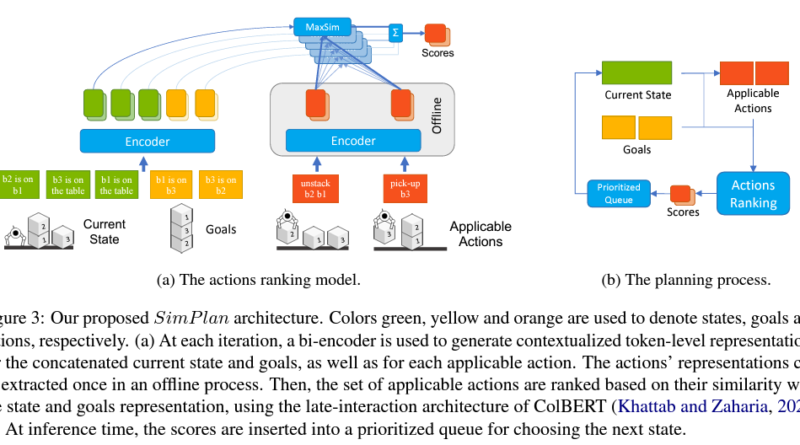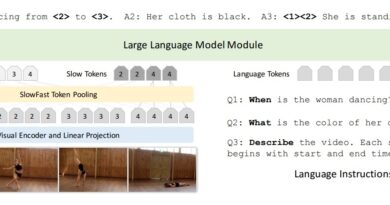IBM Research Unveils SimPlan: Bridging the Gap in AI Planning with Hybrid Large Language Model Technology
Artificial Intelligence (AI) has made significant strides in recent years, revolutionizing industries and transforming the way we live and work. One critical aspect of AI is its planning ability – the capability to design a sequence of actions to achieve a specific goal in a given environment. However, traditional planning algorithms face limitations when it comes to accurately modeling the effects of actions and exploring the state space effectively. To address this challenge, IBM Research has unveiled SimPlan, a hybrid method that combines the linguistic skill of Large Language Models (LLMs) with the structured, rule-based approach of classical planning algorithms.
The Challenge of Planning with Large Language Models
LLMs have demonstrated remarkable proficiency in parsing and understanding natural language. They excel at processing vast amounts of text and generating coherent responses. However, when it comes to planning tasks, LLMs often struggle to accurately model the effects of actions within an environment and explore the state space effectively. This limitation hampers their ability to solve complex planning problems.
IBM Research recognized this challenge and set out to bridge the gap between the linguistic skill of LLMs and the structured, rule-based approach of traditional planning algorithms. The result is SimPlan, a hybrid method that aims to fortify LLMs’ planning abilities by leveraging classical planning strategies.
SimPlan: Marrying LLMs with Classical Planning Strategies
At the heart of SimPlan’s innovation is a bi-encoder model designed to rank possible actions based on the current state and defined goals. This model enhances the predictive capabilities of LLMs by calculating cosine similarities between individual tokens in the query and context, rather than relying on pooled representations. SimPlan employs cross-entropy loss to refine the action selection process, comparing the top-ranked action with the gold next action and incorporating negative examples to prevent action representation collapse.
SimPlan also introduces a novel use of a greedy best-first search (GBFS) algorithm, deviating from the traditional beam search methods commonly used in natural language generation. The GBFS algorithm explores the state space more effectively by prioritizing high-potential paths over optimizing local sequences. This strategic shift enhances the model’s ability to predict the impacts of actions and sequence them towards the set goals more optimally.
Evaluating SimPlan’s Performance
To evaluate the performance of SimPlan, extensive experiments were conducted across various planning domains. The results demonstrated SimPlan’s superior efficacy compared to existing LLM-based planners. In simple configurations, SimPlan achieved a 100% success rate and maintained impressive performance in complex settings, surpassing traditional LLM-based methods by wide margins. SimPlan’s hybrid approach showed remarkable strength in navigating intricate planning challenges with finesse.
The success of SimPlan highlights the potential of hybrid methods in enhancing LLMs’ planning capabilities. By addressing the limitations that have long hindered LLMs in planning tasks, SimPlan opens up new possibilities for deploying AI in complex scenarios. The integration of classical planning techniques with the advanced natural language processing capabilities of LLMs promises a future where AI can navigate complex planning environments with unprecedented ease and effectiveness.
Implications for AI Applications
The development of SimPlan marks a significant leap forward in AI planning. Its innovative hybrid approach not only overcomes the inherent limitations of LLMs in planning tasks but also paves the way for more reliable and sophisticated AI systems. SimPlan sets a new benchmark for AI applications that require sophisticated problem-solving and decision-making skills, offering the potential for enhanced performance across various industries.
The combination of classical planning methodologies with the cutting-edge capabilities of LLMs holds transformative potential. It enables AI systems to tackle complex decision-making and problem-solving challenges with greater accuracy and efficiency. As AI continues to advance, the integration of hybrid methods like SimPlan will play a crucial role in unlocking AI’s full potential and driving innovation in a wide range of applications.
Conclusion
IBM Research’s unveiling of SimPlan represents a significant milestone in AI planning. By bridging the gap between the linguistic skill of LLMs and the structured, rule-based approach of classical planning algorithms, SimPlan enhances the planning capabilities of LLMs and opens up new possibilities for AI applications. The success of SimPlan in solving complex planning problems with remarkable accuracy and efficiency demonstrates the power of hybrid methods in AI.
As the field of AI evolves, the integration of classical planning techniques with advanced language models will continue to push the boundaries of what AI systems can achieve. SimPlan’s breakthrough serves as a testament to the transformative potential of combining different AI methodologies, propelling us toward a future where AI can navigate complex planning environments with unprecedented ease and effectiveness.
Check out the Paper. All credit for this research goes to the researchers of this project. Also, don’t forget to follow us on LinkedIn. Do join our active AI community on Discord.
If you like our work, you will love our Newsletter 📰




